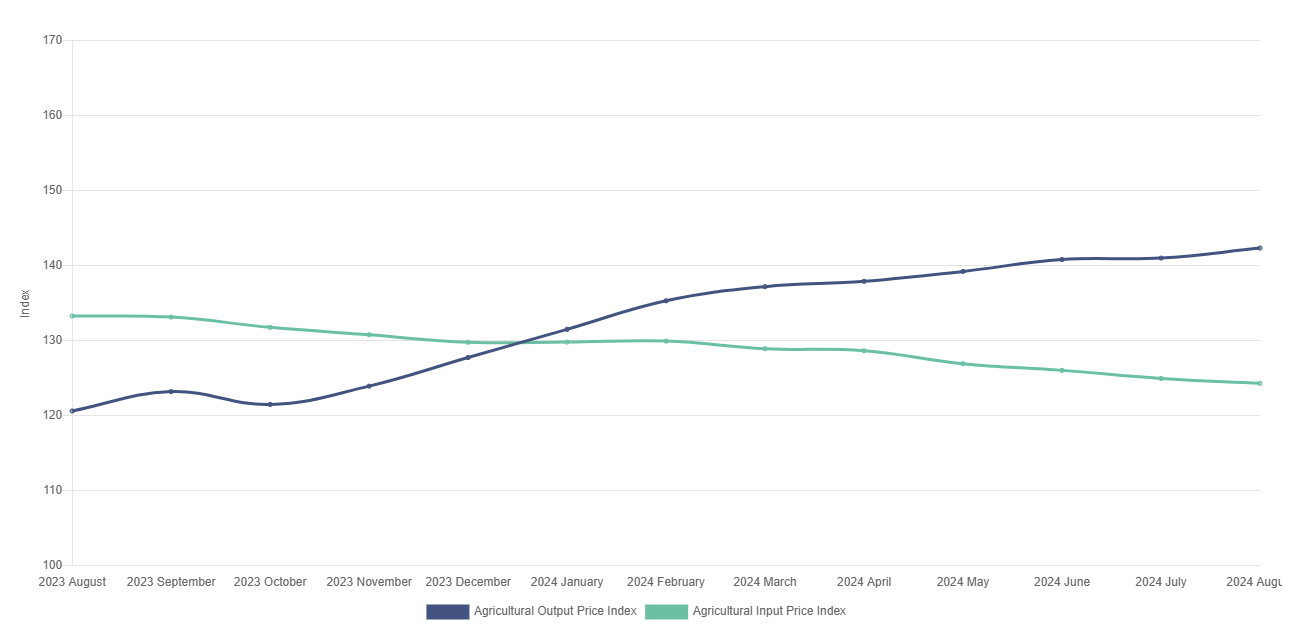Agricultural Output Price Index up 18% since last year
In the 12 months to August 2024, the Agricultural Output Price Index rose by 18%, while the Agricultural Input Price Index dropped by 6.7% over the same period.
According to the latest data published by the Central Statistics Office (CSO) today (Tuesday, October 15), the most significant output price increases over the 12-month period were in milk (+35.5%), potatoes (+16.2%), and sheep (+15.1%).
Meanwhile, decreases were recorded in eggs (-3.7%), and poultry (-1.1%) during the same period.
The indices monitor trends in prices paid to farmers for their produce and in prices paid by farmers for purchases of goods and services. An EU harmonised methodology is used to compile these price indices.
Over the 12 months to August 2024, there were significant reductions in the input prices recorded for electricity (-20.6%), feed (-12.8%), and fertilisers (-9.0%), while plant protection products (PPPs) rose by 4.8%.
On a monthly basis, the Agricultural Input Price Index for August 2024 decreased by 0.5% when compared with July 2024.
The Agricultural Output Price Index for August 2024 rose by 1% when compared with July 2024.
The monthly Terms of Trade grew by 1.5% in August 2024 when compared with the previous month. The annual Terms of Trade went up by 26.5% when compared with August 2023, according to the CSO.
The agricultural terms of trade index is the Output Price Index expressed as a percentage of the Input Price Index.
All percentage changes have been calculated on actual figures before the index is rounded to one decimal place, according to the CSO.
The actual prices used for the index series are based on the market price without the deduction of bonuses, taxes or levies with the exception of deductible value added tax and third-party levies.
Standardised prices are used for milk and cereals to ensure that products of identical quality are priced in successive periods.
In the case of milk for manufacturing, this means pricing at a fixed fat and protein content. Standardised cereal prices are based on the harvest price at 20% moisture content.






